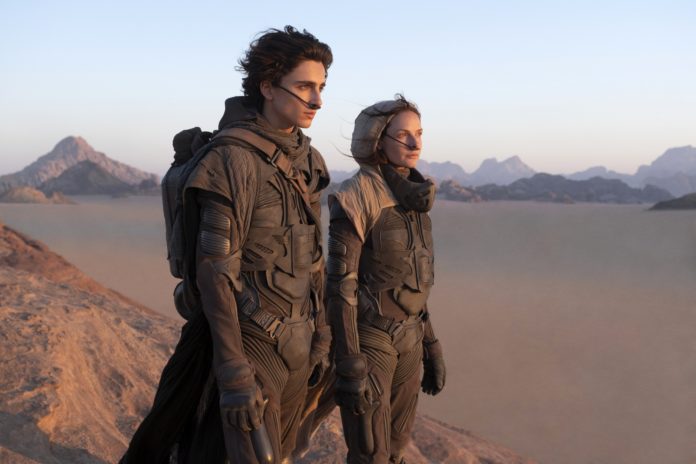
By Emma Weidmann | Intern
The newest film iteration of the popular science fiction novel “Dune” opened Friday, starring Timothee Chalamet and Zendaya. The story has been revamped and adapted for the screen multiple times since its publishing in 1965 — this time to appeal to the Generation Z audience.
But how well does “Dune” stand the test of time, and can it really grab the interest of a new generation?
If its box office earnings are any indication, the answer is pretty clear. “Dune” brought in $40 million domestically during its opening weekend in theaters and on HBO Max, marking a successful debut. However, it’s not as successful as some of this year’s other releases, like Marvel’s “Shang-Chi” and the newest installment of Sony’s “Venom.”
The casting of Chalamet and Zendaya as Paul Atreides and the mysterious Chani, respectively, is genius, and is probably responsible for a significant portion of those earnings. Most of Gen Z confidently declares Chalamet and Zendaya to be the two most attractive people on the planet. That’s a major upside when marketing a movie that’s more familiar to people our parents’ and even our grandparents’ age.
Unfortunately, Warner Bros. has decided to make heavy-handed use of Zendaya’s star power to market the movie, which would be permissible if she had more than seven minutes of screen time. In reality, Zendaya’s character only appears in fleeting visions to Atreides until 20 minutes before the end of the film. Even then, her lines are scarce and her presence is not very impactful. Nevertheless, she has been paraded around on an extensive press tour, doing interviews and being the focus of ads and trailers for a movie she’s hardly in — which hardly seems fair to her or the other massively talented actors who play more important roles. Oscar Isaac, Josh Brolin and Rebecca Ferguson have much more visible roles, yet they’re overlooked in the press and in promotions.
But, even a stellar cast can’t hide a convoluted plot. “Dune” is very much a movie for its older fans, especially those who have read the book or seen previous film or TV iterations. It meanders from scene to scene, and while it adequately explains the conventions of the people and some of their technology, there seems to be very little going on until the end.
In the first few minutes, the audience is given a transparent metaphor for the plunder of the Middle East for the sake of oil. The Atreides clan is given the deed to the desert world Arrakis by the emperor, and permission to collect “spice,” a psychoactive mineral found scattered across the sands. It powers technology and has healing properties. The people of Arrakis have been oppressed as their land belongs to “outworlders,” who are essentially a colonizing power. All of this seems relevant, but is barely touched on for the remainder of the film.
So, to answer the question above, “Dune” holds up. It’s visually stunning in its use of nature to inform the design of technology — the method of flight is something called an “ornithopter,” a helicopter which mimics and resembles a dragonfly — and the musical score is chilling. It’s enjoyable based on all this and the performances of its cast. However, the only way for it to truthfully appeal to a new audience is if that audience pays very close attention to catch the plot, and brushes up on the basics before watching.





